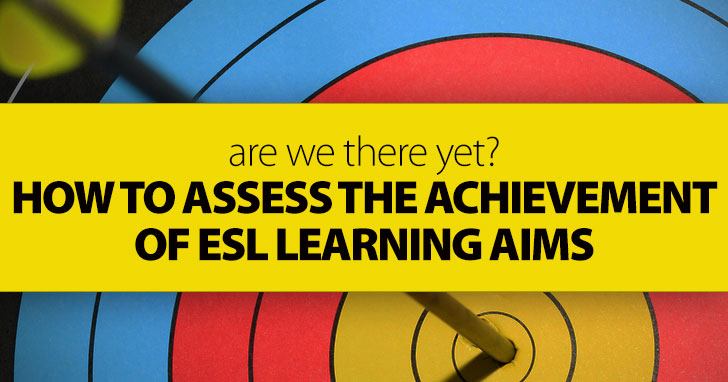Are We There Yet? How to Assess the Achievement of ESL Learning Aims


You open the textbook and glance through the material, only to find that the reading exercise is just not up to scratch. Maybe it’s too short, or long; perhaps it’s too demanding, or you think your students will find it too easy. It might not practice the target language, or it might bring in vocab you’re not focusing on at present. Or - and this happens much more often than it should - it might just be a bad piece of writing.
In these situations, I’m learning to be bold and take over the situation. After all, having spent weeks or months with an ESL class, I’m in the best position to judge their reading level, vocabulary background, and the extent to which the reading might fit well with their interests, time of life, and cultural environment.
For example - it’s an extreme one, but it serves the purpose - I vetoed an otherwise interesting article on the transformation of pig farms, from family-owned co-operatives to giant, industrial food factories. I did this because two-thirds of my class were Muslim, and they were unlikely to become interested in something which is expressly prohibited by their faith. The point at hand was not pig-farming, of course, but the industrialization of food, so I wrote a brief piece on how family farms are disappearing, and instead discussed those controversial (and pretty horrible) CAFO cattle operations. It worked out very well, and without offending anyone; it also only took a few minutes’ research and writing, and I learned a lot when preparing the reading for my class.


Consider your content. What is the true topic, or concept to be discussed?
What should be the level of this piece? Is it for advanced, intermediate or elementary learners? From the outset, put yourself in your students’ shoes and be honest, rather than hopeful, about the likelihood of their understanding what you write.
What vocabulary should be included? This should be a mix of the day’s target language (6-8 words, maximum) and words which require review.
Consider the structure and length of the piece. A rough guideline would be to keep the article under 80-100 words for elementary classes, 140-175 for intermediate, and probably well under 300, even for advanced students. Egregious length can be intimidating, and if you’re straying well outside of these boundaries, consider how you might express the points more concisely, and/or remove one or more examples.
Limit the sentence length to 12-20 words (maximum) and 2-4 clauses. You’re looking for a balance between readability and challenge; you’re certainly not deliberately trying to obscure the meaning, except if working with advanced classes, or focusing on critical thinking, judging the reliability of an article, etc.
Break up the text into eminently readable, short paragraphs. Consider Yahoo news and similar ‘info-tainment’ sites as a model; they hold their readers’ attention by being straightforward to digest. Make it as likely as you can that your students’ focus won’t wander before the end of the piece.
Throw in some idioms. If these are new, try to provide context which gives the students a good chance of guessing the meaning.
Decide your questioning strategy. You might be hoping that the students catch the gist of the piece (sometimes called ‘extensive reading’) or that they understand nearly every word, and certainly every concept (‘intensive reading’). Decide this in advance, and then create 3-12 questions of a varying nature. They might be a mix of:
The importance of production can’t be over-stated. Far too often during comprehension exercises, students rely on reiterating chunks of the text; it is far better, on every level, for them to create the answer in their own words. This is especially true of Asian students, whose language-learning experience may have emphasized rote methods and just this kind of ‘regurgitative’ approach.
After some practice, and familiarization with your students’ true learning needs, the process becomes quicker for you, more useful for your students, and hopefully enjoyable for everyone.